
Forest and Community Program Director

Indigenous Community Engagement Manager
Fallen logs on the Hoopa Valley Reservation are organized and prepared to be loaded on a truck and transported to a nearby mill for processing. Photo credit: Sean Gutierrez
Forest and Community Program Director, Stephanie Gutierrez, and Indigenous Storytelling Fellow, Jessica Douglas, reflect on a growing body of work in partnership with the Hoopa Valley Tribe on Indigenous forest stewardship and climate-smart forestry.
Since time immemorial, the Hupa people have called the area within and around what is now the Hoopa Valley of California and along the Trinity River home. Today, Hupa people are still living within their homelands on the Hoopa Valley Reservation, which is over 90,000 acres (98 percent of which is forested) in northern California along the Trinity River. Despite the ongoing impacts of settler colonialism and the creation of a reservation, the Hupa people have continued to maintain a close relationship with these same landscapes.
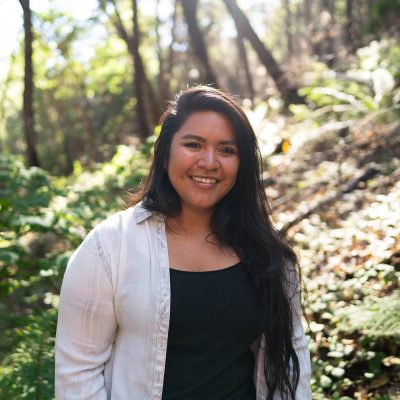
“
The health of the community and the health of the forest are deeply connected to one another
—Elisha Flores, former Forest Planner for the Hoopa Valley Tribal Forestry department, at an active logging site on the Hoopa Valley Reservation. Photo by Sean Gutierrez
Since Hupa culture and identity is inherently rooted in and tied to the land, the environmental impacts associated with climate change will have a wide range of implications threatening the well-being of the Tribe. Many tribes, including the Hoopa Valley Tribe, must manage forests with multiple objectives in mind. After reclaiming management control from the Bureau of Indian Affairs (BIA) in 1990, the Hoopa Valley Tribe’s forestry department (Hoopa Valley Tribal Forestry) has placed increasing emphasis on community needs and values, while continuing to produce timber. Through their management practices, Hoopa Valley Tribal Forestry steward tribal lands for access to hunting and gathering sites and use a variety of treatments including cultural burns to promote healthy acorns, mushrooms, and hazel and beargrass for basketry materials.
“
Sustainability is important to us here and also a holistic approach. We’re managing not just for timber, like a lot of places around us have, but also the cultural resources, wildlife, foods, medicines, everything that we’ve always done here
—Elisha Flores, former Forest Planner for the Hoopa Valley Tribe
In 2020, Ecotrust and Hoopa Valley Tribal Forestry entered into a formal partnership, weaving together our shared interests in Indigenous forest stewardship and climate smart forestry. Many Hoopa Valley Tribal Forestry management activities offer clear examples of what climate smart forest practices look like on the ground. For the Tribe, climate smart forestry and Indigenous forest stewardship intertwine. As alternatives to large-scale clearcutting, the Tribe uses thinning and patch-cutting to support the cultivation and protection of cultural resources, including First Foods, and the use of fire to restore of forest health and resilience. In our partnership, we have worked together to ensure the Tribe can put a finer point on forest climate risk and integrate community concerns and priorities for forest climate resilience.
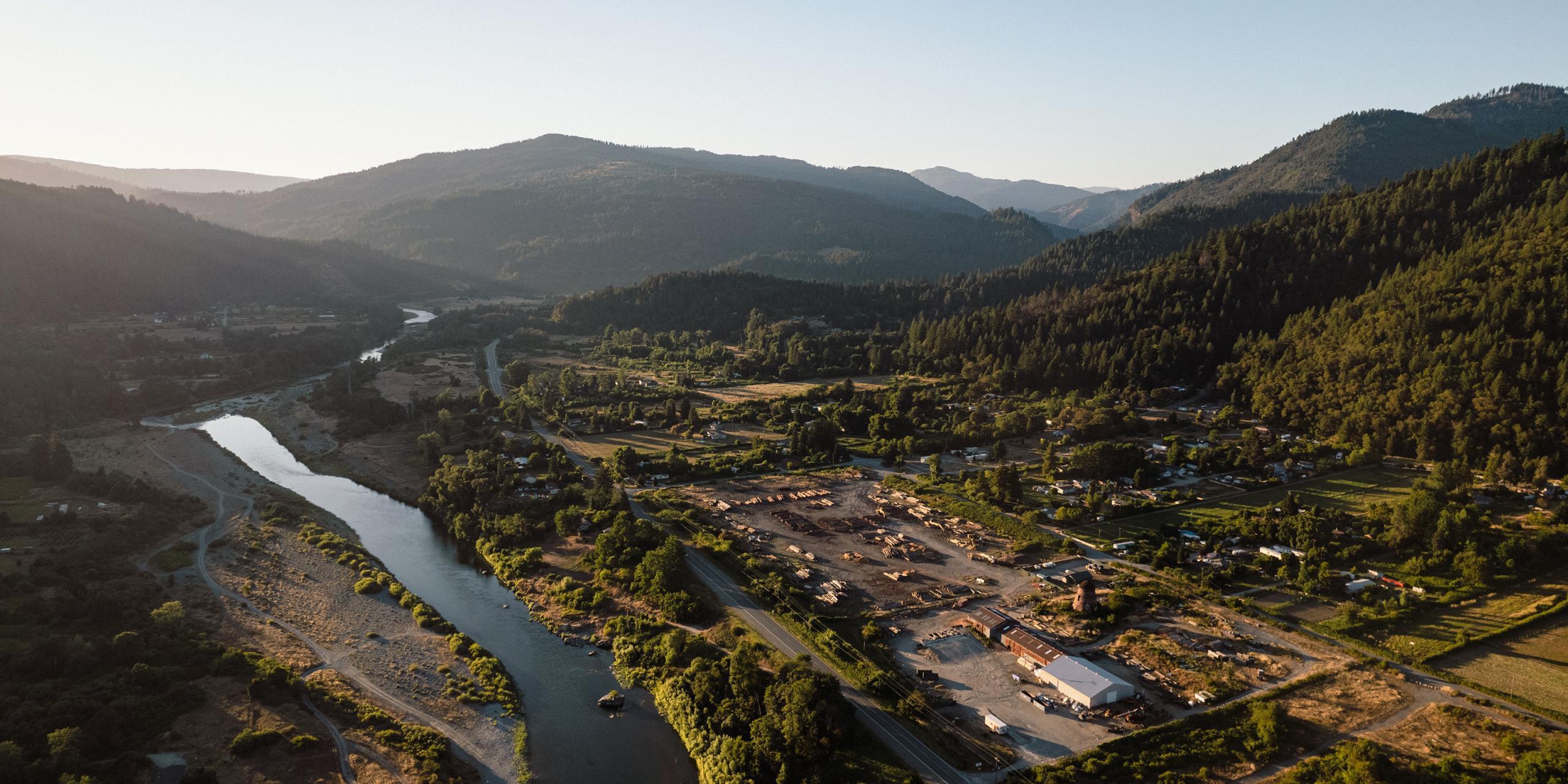
The Hoopa Forest Industries mill, an enterprise of the Hoopa Valley Tribe, operates on the Hoopa Valley Reservation in northern California. Photo credit: Sean Gutierrez
At the center of our partnership is the community. Throughout most of our work together, we’ve had to reimagine ways to engage with the community because of the ongoing pandemic. Both Ecotrust and Hoopa Valley Tribal Forestry staff had to be adaptive, flexible and continue to center community safety. We used new channels to build relationships with the community virtually. Using social media, we developed and distributed a survey to identify the community’s concerns and priorities in managing Hupa forests and landscapes, especially as climate change is already altering the landscape. In identifying the needs and concerns of the Hupa community, Hoopa Valley Tribal Forestry will be able to use community concerns to frame and interpret forest modeling that Ecotrust is facilitating, to identify the impacts and tradeoffs of the Tribe’s forest management options.
A video about Hoopa Valley Tribal Forestry. Video credit: Roland Dahwen
To continue to deepen and increase community engagement in forest management decisions, the Tribe wanted to give the tribal community an idea of the kind of projects the forestry department could prioritize. Together, we produced a video, featuring several members from Hoopa Valley Tribal Forestry, to help increase the visibility of the department’s history and current management approach. The video explores the history of the BIA’s control over Hupa tribal lands and how Hoopa Valley Tribal Forestry has been transitioning forest management to better serve the health and wellbeing of the Hupa community and forests. The video also touches on some of the current challenges the Tribe faces in balancing climate smart practices with economic needs. This emphasis on balancing and integrating concerns is a hallmark of both Indigenous stewardship and climate smart forestry.
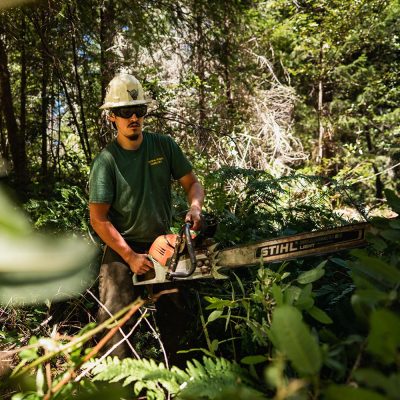
Zack Masten, an employee of the Hoopa Valley Tribal Forestry department, uses a chainsaw to remove understory as part of a CalFire forest treatment project on the Hoopa Valley Reservation. Photo credit: Sean Gutierrez
“
[We] obviously want to do things in a way that feels good and takes care of the forest. Our timber harvesting here has been deeply ingrained in our economy for a very long time. As we’re changing our timber harvesting practices, [it] is a challenge figuring out how we make sure that doesn’t have a big impact on the economy for the Tribe as a whole.
—Elisha Flores
To address this challenge, Ecotrust and Hoopa Valley Tribal Forestry will continue to partner in 2023 and beyond on a cost-benefit analysis of climate smart forest treatments and informed by the community’s survey and interview data. Further into the future, we will continue to collaboratively research and plan the implementation of these climate smart forest treatments, as well as grow our partnership to include other tribes, universities, and Forest Service officials.
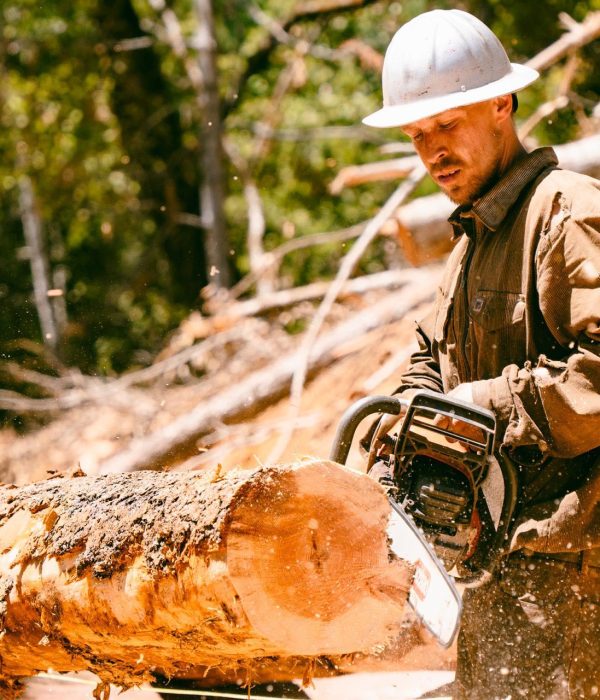
Roman Price, an employee of Hoopa Forest Industries, uses a chainsaw to prepare a fallen log of timber to be transported. Photo by Sean Gutierrez
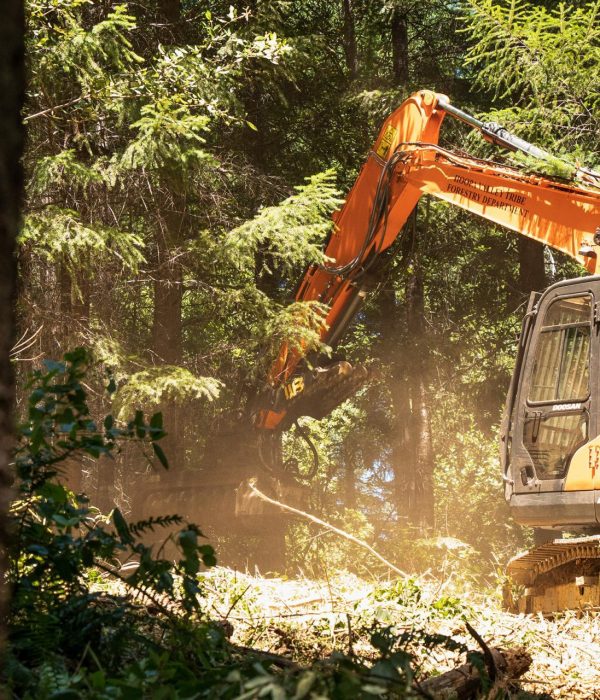
Jeffrey Marshall, Lead Equipment Operator for the Hoopa Valley Tribal Forestry department, operates a masticator to reduce underbrush as part of a wildfire mitigation forest treatment. Photo by Sean Gutierrez
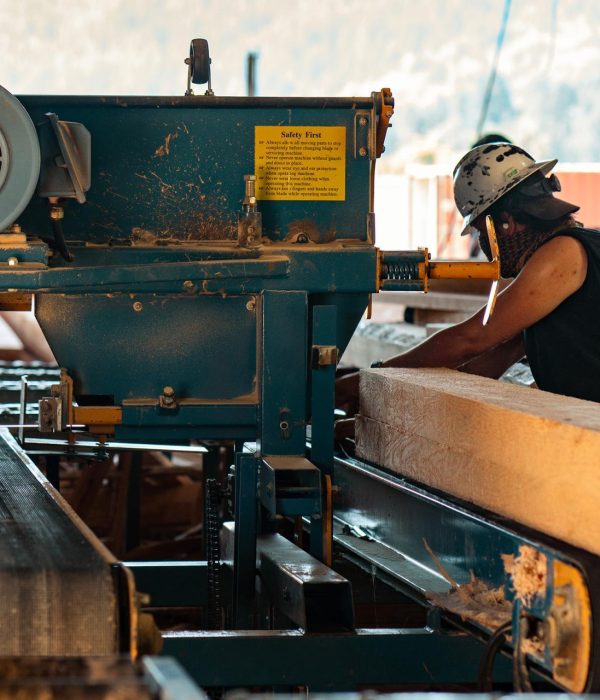
Jose Gonzalez, an employee of Hoopa Forest Industries, runs a board of timber through a wood planer in order to produce a board of timber with an even thickness. Photo by Sean Gutierrez
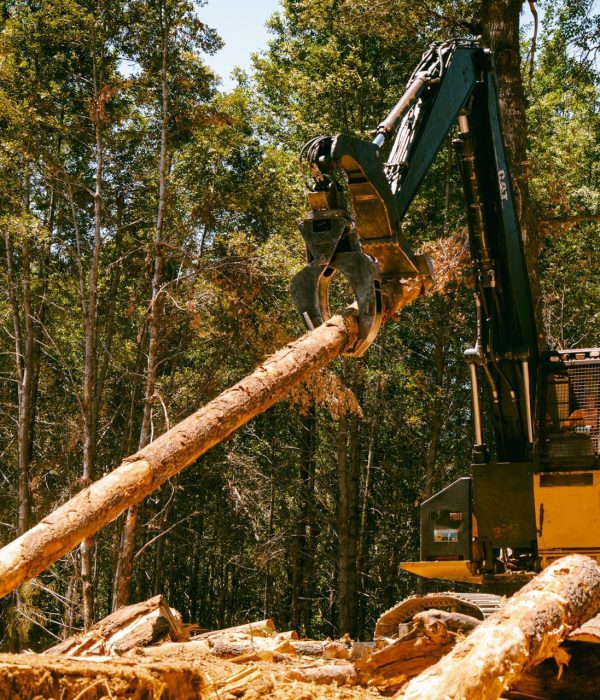
Fallen logs on the Hoopa Valley Reservation are organized and prepared to be loaded on a truck and transported to a nearby mill for processing. Photo by Sean Gutierrez
We’re honored to work alongside the Hoopa Valley Tribe to support their Indigenous forest stewardship and climate smart forestry practices. To ground ourselves moving forward, it’s like Elisha Flores said: “If we keep our values at the forefront, I have hope that it will help heal the lands.”

Website
Hoopa Valley Tribal Forestry manages more than 87,000 acres of forestland in Northern California.